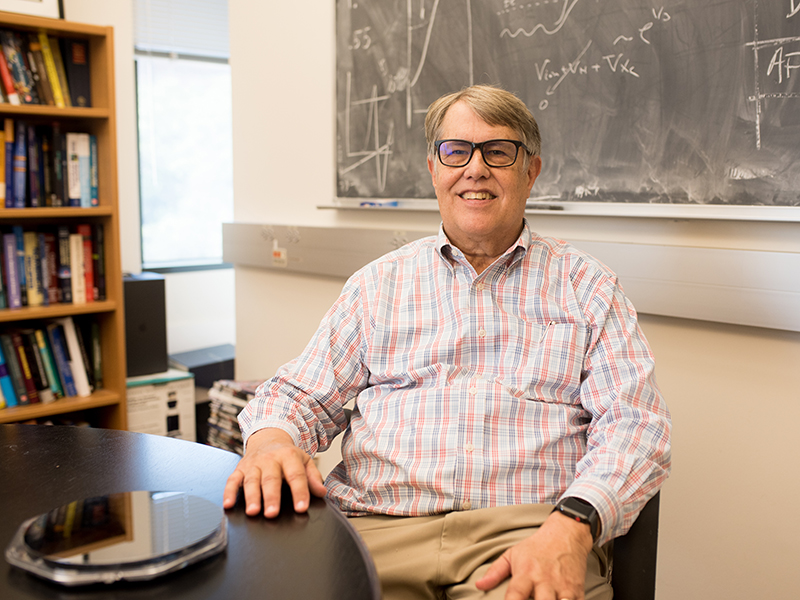$6.2M Grant Helps Researchers Develop Software to Discover Low-Cost Energy Materials

Researchers at The University of Texas at Austin have received a $6.2 million grant over a five-year period to develop computer software to design and discover materials for low-cost energy applications. Potential uses include economical battery materials to capture solar energy and materials that convert water to hydrogen using sunlight.
“The software we develop will help eliminate the expensive trial and error of laboratory experiments trying to predict and understand the properties of materials,” said James Chelikowsky, the project’s principal investigator and professor in the Department of Chemical Enigneering at the Cockrell School of Engineering. “Our new code will incorporate, and thus shortcut for other researchers, the enormously complex equations that predict properties of materials solely from knowledge of their chemical composition, which is a key element for energy materials,” he said.
The U.S. Department of Energy awarded the five-year grant to Chelikowsky, the W.A. “Tex” Moncrief Jr. Chair of Computational Materials and director of the Center for Computational Materials within the university’s Institute for Computational Engineering and Sciences (ICES). Chelikowsky will lead a multi-institutional team. Other researchers on the project include Alex Demkov, professor of physics at the university, as well as faculty members and researchers at the University of Minnesota, Lawrence Berkeley National Laboratory and the University of California, Berkeley.
The wide range of materials problems associated with energy-related applications requires a team of physical scientists, materials engineers, computer scientists and applied mathematicians. This diverse research team will develop and implement scalable, open-source codes to be used across the scientific community, he said.
“We already know that the physical basis for predicting properties of materials exists within the quantum mechanical theory of atoms,” said Chelikowsky, who is also a professor in the departments of physics and chemistry and biochemistry. “Our team’s software will aid in the design of new materials and efficiently ascertain a material’s viability for energy applications.
“In the end, our software will be open to all, thanks to the DOE,” Chelikowsky said. “It should significantly accelerate the discovery of new materials for energy applications.”
